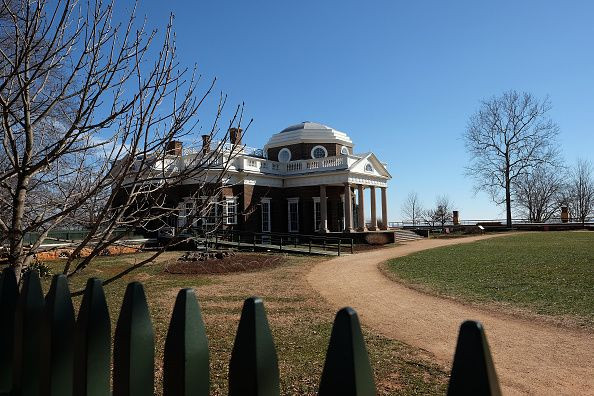Who Was Sally Hemings? Thomas Jefferson’s Slave Bore Him 6 Children

In a discovery that might throw more light on the infamous relationship between Thomas Jefferson and Sally Hemings, archaeologists have discovered Hemings' living quarters in what was once Jefferson's plantation home in Monticello, Virginia, reported NBC News Monday.
This is said to be the first physical space devoted to Hemings, whose life till date remains a half-solved puzzle.
Historians have debated Hemings’ role in the former president’s life, ever since it was claimed during his first term that he fathered children with her. According to Monticello.org, the claim was made in a report published in September 1802 by political journalist James T. Callender, an estranged ally of Jefferson.
Read: Decapitated Skeletons Show Ancient Chinese Kept Prisoners Of War As Slaves
Callender wrote in a Richmond newspaper that Jefferson had for many years kept one of his own slaves as his “concubine.” "Her name is Sally," Callender wrote, adding Jefferson had several children by her.
Although there were rumors of a sexual relationship between Jefferson and an enslaved woman before 1802, Callender's article spread the story widely and was published in many newspapers during the remainder of Jefferson's presidency. Jefferson apparently offered no public explanation or comment on the claim. The entire episode came to be known as the Jefferson–Hemings controversy.
A glimpse into Hemings' history suggests she was born to Elizabeth Hemings in 1773 and was probably named Sarah. According to NBC, there are only four known descriptions of her. Enslaved blacksmith Isaac Granger Jefferson recalled Hemings was “mighty near white . . . very handsome, long straight hair down her back." It is not known if she was literate as she left no known written accounts. History.com says that her father was John Wayles, Jefferson’s father-in-law. She came into the Jefferson’s household as part of Jefferson’s inheritance from the Wayles estate in 1774, and probably served as a nurse to Jefferson’s younger daughter Maria.
In 1784, Jefferson on being appointed the American envoy to France sent for Maria to live with him. Hemings, a teenager at the time, was chosen to accompany Maria to France in 1787, after an older slave became pregnant and could not make the journey. Hemings returned with the family to their Virginia home in Monticello in 1789, and seems to have performed the duties of a household servant and lady’s maid.
It was after this the then 46-year-old Jefferson is said to have maintained a sexual relationship with Hemings and fathered children with her. Monticello.org states Jefferson was at Monticello at the likely time of conception of all of Hemings's six known children. There are no records suggesting that she was elsewhere at these times, or records of any births at times that would exclude Jefferson's paternity.
Hemings’ children were light-skinned, and three of them (daughter Harriet and sons Beverly and Eston) lived as members of white society as adults. According to contemporary accounts, some of Hemings' children strongly resembled Jefferson. All six of them were freed by Jefferson, but he never gave freedom to any other nuclear slave family. He did not free Hemings. She was permitted to leave Monticello by his daughter Martha only after Jefferson's death in 1826, and went to live with her sons in Charlottesville, where she is believed to have died in 1835.
Read: Ancient Egypt Tombs Showed Funeral Gardens, Archaeologists Finally Find One That Is 4,000 Years Old
In a paper published in the journal Nature in 1998, Dr. Eugene Foster argued a DNA study provided evidence that Jefferson was the biological father of Eston Hemings. The Thomas Jefferson Foundation set up a committee in the same year to evaluate the DNA study. After the findings of the committee were published, the then president of the foundation Daniel P. Jordan said in a statement: “Although paternity cannot be established with absolute certainty, our evaluation of the best evidence available suggests the strong likelihood that Thomas Jefferson and Sally Hemings had a relationship over time that led to the birth of one, and perhaps all, of the known children of Sally Hemings.”
Monday’s NBC report said Monticello’s curators are working diligently to incorporate Hemings’ life as a part of Jefferson’s comprehensive story, which counters old newspaper accounts citing Hemings as Jefferson’s concubine. Hemings’ room is being restored for eventual public viewing.
© Copyright IBTimes 2024. All rights reserved.





















